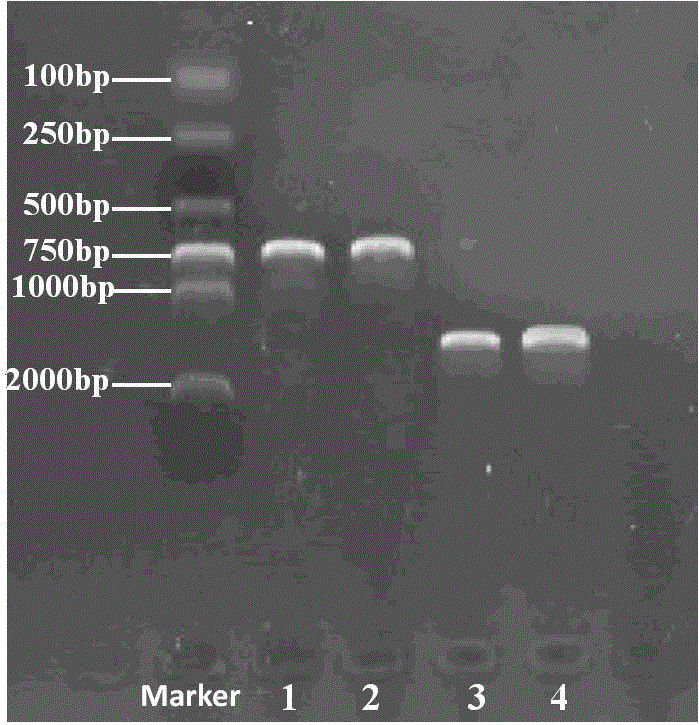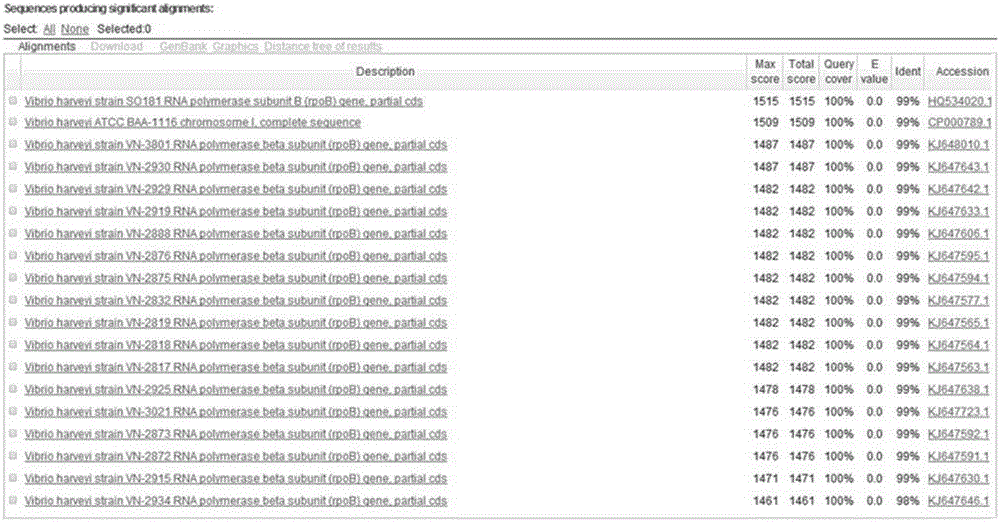Method for identifying high-homology marine vibrios based on rpoB genes
A marine vibrio and homology technology, applied in biochemical equipment and methods, microbial measurement/inspection, etc., can solve the problems of low identification accuracy and achieve low identification accuracy, cumbersome operation, and long detection cycle Effect
- Summary
- Abstract
- Description
- Claims
- Application Information
AI Technical Summary
Problems solved by technology
Method used
Image
Examples
Embodiment 1
[0029] In this example, 50 strains of marine Vibrio were used as the research object, including Vibrio harvei (25 strains), Vibrio parahaemolyticus (10 strains), Vibrio alginolyticus (7 strains), Vibrio mimicus (2 strains), eel Vibrio (2 strains), Vibrio resplendent (2 strains), Vibrio tower (1 strain), Vibrio orientalis (1 strain). The selected microorganisms are listed in Table 1.
[0030] In order to confirm that rpoB gene sequencing has advantages over 16S rRNA sequencing in detecting marine Vibrio with high homology, this example simultaneously performed 16S rRNA and rpoB sequencing on 50 strains of marine Vibrio, and compared the sequencing results.
[0031]
[0032]
[0033] The specific method is:
[0034] 1) Bacterial recovery and culture: Take out the strain to be recovered in the ultra-low temperature refrigerator, check the strain number, pick an appropriate amount of solid frozen material with a sterile toothpick in the 2216E medium, use the three-section...
Embodiment 2
[0052] Two strains of Vibrio harveyi VIB 651 and VIB 642 were used as identification strains, and 16S rRNA and rpoB sequencing were performed respectively. The 16SrRNA and rpoB sequencing processes were the same except for the primers used in PCR amplification.
[0053] 1) Bacterial recovery and cultivation: Take out the strains VIB 651 and VIB642 to be recovered in the ultra-low temperature refrigerator, check the strain number, pick an appropriate amount of solid frozen material with a sterile toothpick on the 2216E medium, and use the three-section line method to inoculate. Place the plate in a 28°C incubator for 16-18 hours.
[0054] 2) Extract bacterial genomic DNA: Add 50µl sterile water to a sterile PCR tube, pick a single colony and mix it well, adjust the bacterial solution to 1-2 turbidity, shake for 15 seconds; boil in boiling water at 100°C for 10 minutes After taking it out, place it on ice for 10 minutes; centrifuge at 13,000 rpm for 5 minutes, and take about 30...
PUM
 Login to View More
Login to View More Abstract
Description
Claims
Application Information
 Login to View More
Login to View More - R&D
- Intellectual Property
- Life Sciences
- Materials
- Tech Scout
- Unparalleled Data Quality
- Higher Quality Content
- 60% Fewer Hallucinations
Browse by: Latest US Patents, China's latest patents, Technical Efficacy Thesaurus, Application Domain, Technology Topic, Popular Technical Reports.
© 2025 PatSnap. All rights reserved.Legal|Privacy policy|Modern Slavery Act Transparency Statement|Sitemap|About US| Contact US: help@patsnap.com



